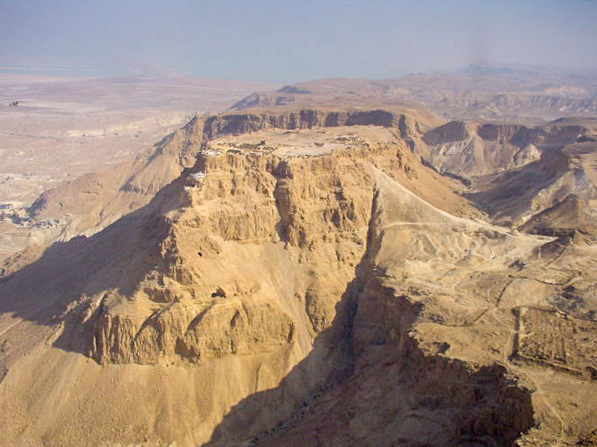Masada in Israel was built by Herod the Great in 37BC overlooking the Dead Sea. Masada, which is actually a fortified palace, was occupied by a Roman garrison following the death of Herod the Great. It became a refuge for zealots, or Sicarii, who revolted against the Romans and returned to Jerusalem around 66 CE.
The Roman Tenth Legion, led by Flavius Silva, attempted to conquer Masada in 73 CE, the last point of Jewish insurrection. The attack resulted in a mass suicide of close to a thousand zealots, who chose death over surrender.
The original buildings surrounding Masada in Israel date back to 100BCE. They were a perfect addition for Herod the Great’s palace on the western side of the mountain.
Masada was constructed with three separate terraces at the northern end. Those terraces are luxuriously fitted with Roman-style bathhouses, storage facilities, dwellings, a synagogue (the oldest dating synagogue in Israel), and fortified walls with defensive towers.
What’s most remarkable about Herod the Great’s Masada
Masada is a popular site for tourists, not only because of its history, but its revolutionary construction. Those that wish to hike Snake Path on the eastern side of the mountain will gain a much different perspective. In fact, it’s part of the “Masada experience”. However, for those that don’t wish to exert themselves, there are cable cars available.
During the 1960’s, excavations of Masada in Israel were conducted by the Hebrew University of Jerusalem, headed by Israeli archaeologist Yigael Yadin. After further research, it was determined that some of the buildings had been altered, one which had been turned into a synagogue. The synagogue, however, did not contain a mikvah or the benches found in other early synagogues.
Today, Masada is an Israeli national shrine and was declared a UNESCO World Heritage Site in 2001.
Picture Sources
Also check out:
- Leonardo Da Vinci: The Artist That Solved The Riddle of Earthshine
- Ancient Digger: Monday Ground Up: Early Christian Necropolis in Pecs Hungary
- Ancient Digger: Monday Ground Up: The Contributions and Legacy of The Hebrews













2 Comments:
Nice place , but the places is too hot because the weather
As i see in the picture, i can idea that this is a very hot place.. am i right?
Post a Comment
We appreciate comments, but we delete SPAM.